Joro spiders, invasive and the size of your hand, may be crawling to Florida, study shows
Has this ever happened to you? You get up, stretch, throw on a robe, open the door to get the paper or walk the dog and NEARLY WALK FACE FIRST INTO A SPIDER WEB WITH A GREAT BIG HONKING SPIDER IN THE MIDDLE OF IT.
We've all been there. It's a Florida thing. Banana spiders, a catch-all term used to describe several species of spiders including golden silk orb-weavers and the Brazilian wandering spider, get up to an inch-and-a-half in body length and love building webs where prey — or you — can stumble into them.
Get ready for spiders three times that size.
The Joro spider, the latest spider species found in the U.S., is spreading rapidly along most of the eastern coast, according to a study from Clemson University.
"These things are here to stay," said David Coyle, a scientist and professor at Clemson.
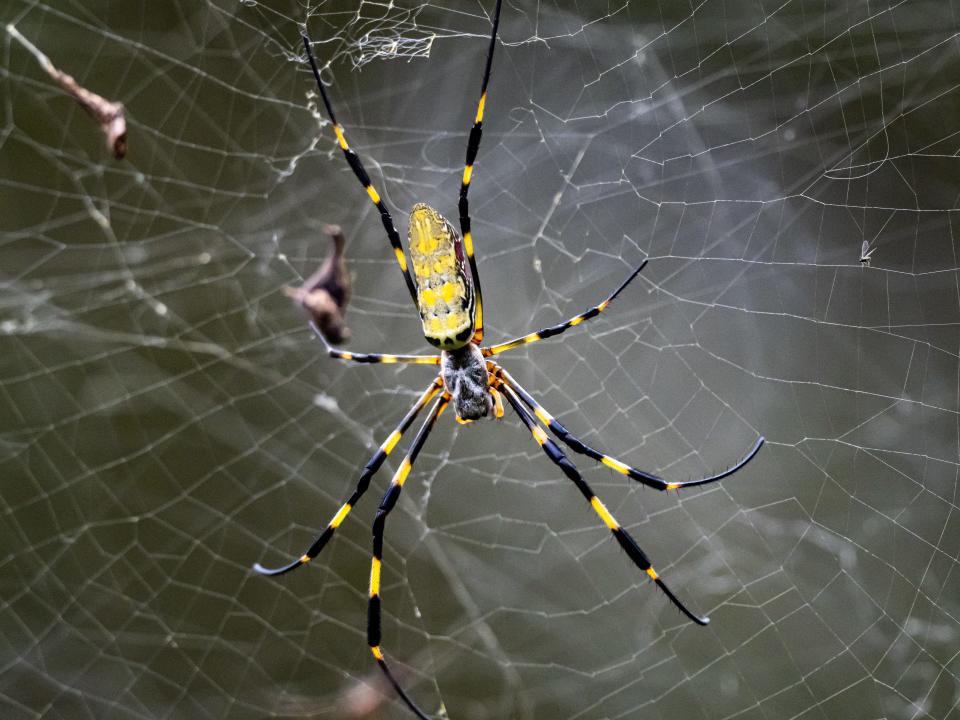
Joro spiders: Huge and invasive, spreading around eastern US, study finds
What to know about the arachnid: Invasive Joro spiders are weaving their web across the US
First things first:
Are Joro spiders dangerous?
Sort of, since they are venomous and because they are extremely invasive. But Joro spiders tend to be timid and don't bite humans or pets unless they're cornered, and even then their fangs don't penetrate human skin. They're just huge.
Joro spiders also eat mosquitos, flies, stink bugs and anything else they catch. However, they are extremely invasive. When you get Joro spiders, the study found, you don't get any other spiders.
“These are not just benign spiders coming to catch and kill bad things; these are pushing out native species and catching and killing whatever happens to get in their webs,” Coyle said. “Are they bad or good? It’s very nuanced depending on your perspective.”
Vampire bats coming: Climate change is moving vampire bat habitats and increasing rabies risk, study shows
What is a Joro spider?
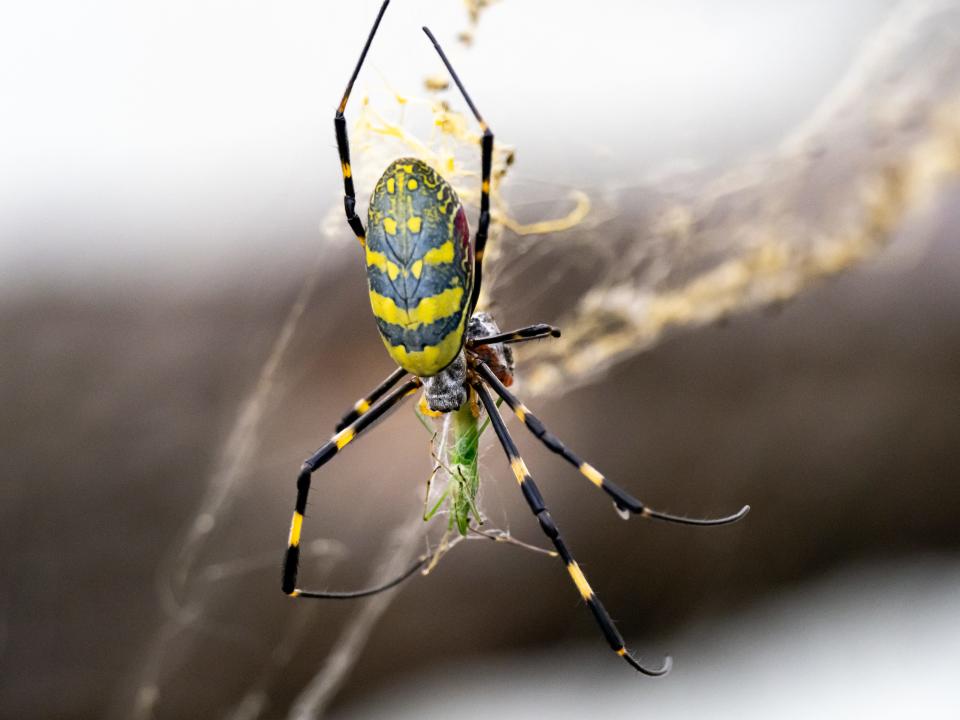
Joro spiders, also known as Trichonephila clavata, are golden orb-web weavers, according to the University of Georgia. Female Joro spiders are larger than the males, around 3-4 inches long, and are mostly yellow with dark blue stripes and a reddish abdomen. Flattened out, their leg span is about 6-8 inches long, about the size of an adult human palm.
Males are considerably smaller, just over a quarter of an inch long, and are brown with dark gray or black and yellow stripes.
Joro spiders, like all golden orb-web weavers, make "enormous, multi-layered webs of gold-colored silk," the University of Georgia said. Since the spider is large it needs a large, strong web, making them easier for humans to see and freak out over. Joro spider webs are strong enough to catch bumblebees or carpenter bees.
Do Joro spiders parachute?
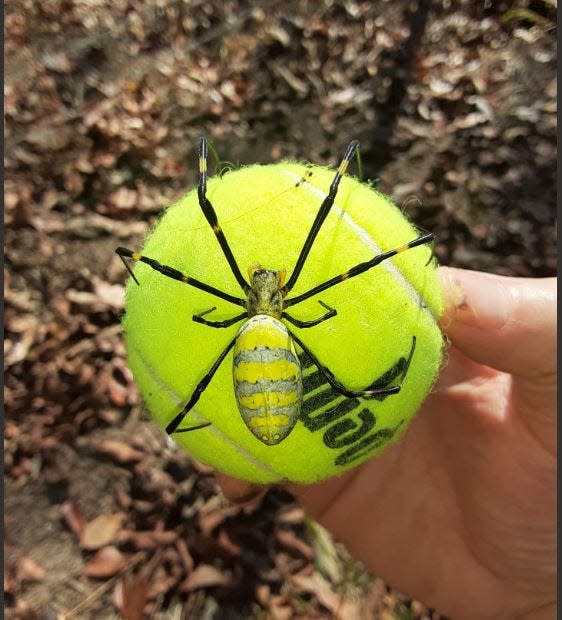
Joro spiders don't parachute, they travel by "ballooning" or casting out silks to carry them on the wind for miles. Good news for your nerves: Only the smaller ones do this, the larger ones are too heavy.
Will there be Joro spiders in my house?
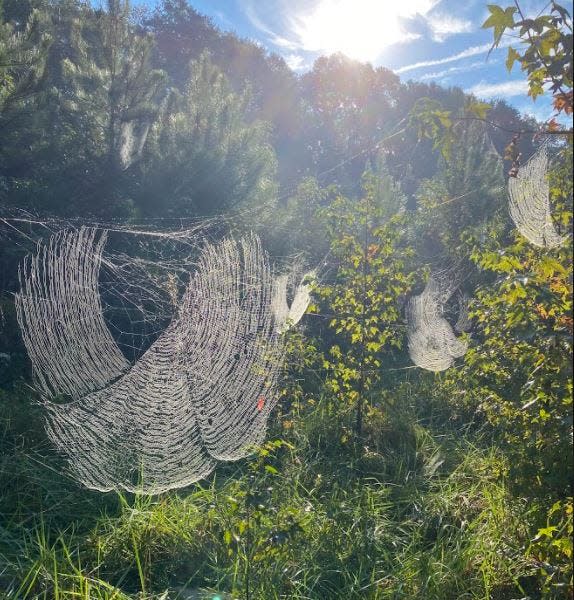
No. Joro spiders prefer the warmth of the sun. You're more likely to see them around the outside of your house or in the yard.
Where do Joro spiders come from?
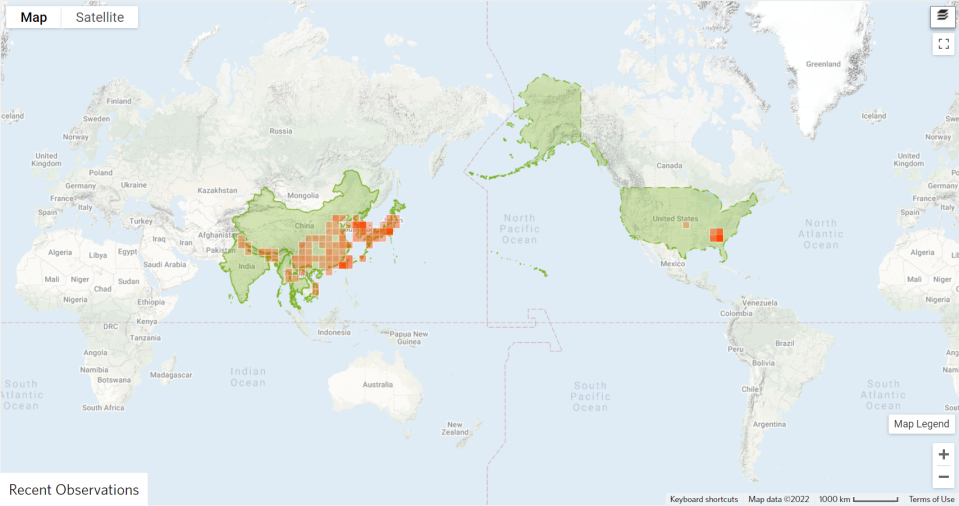
The Joro spider first popped up in the U.S. in Georgia around 2013 to 2014. It's native to East Asian countries such as China, Japan, Korea and Taiwan.
As of 2022, the Joro spider's range in the U.S. spans at least 120,000 kilometers across Georgia, South Carolina, North Carolina and Tennessee, with reports of the spider in Alabama, Maryland, Oklahoma and West Virginia, according to Clemson researchers.
Have Joro spiders been spotted in Florida?
Not yet, but Clemson researchers suggest it's only a matter of time. The study used 20 variable and modeling techniques to find comfortable habitats for Joro spiders, which turns out to be a very large potential range.
“Those data show that this spider is going to be able to inhabit most of the eastern U.S.,” Coyle said. “It shows that their comfort area in their native range matches up very well with much of North America."
How can I report a Joro spider sighting in Florida?
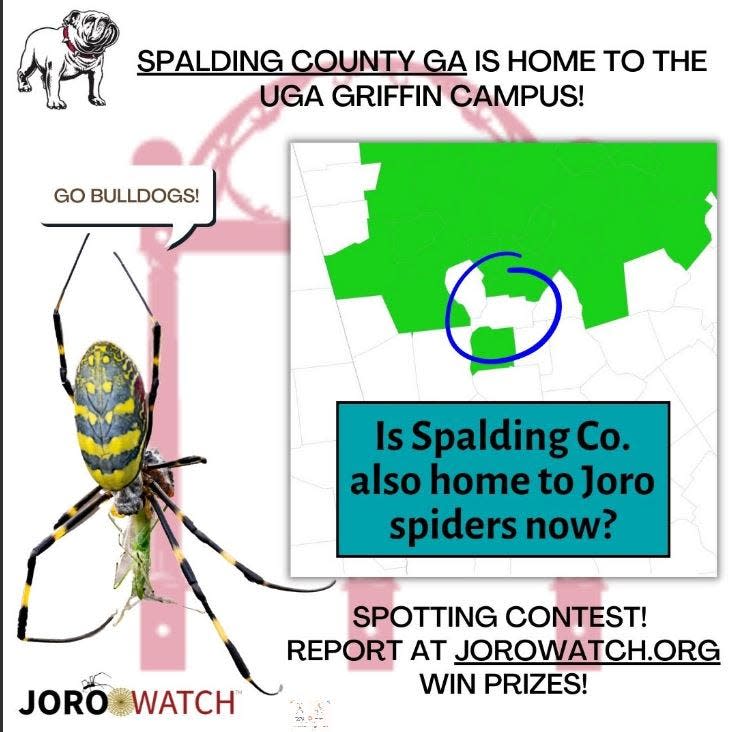
The Center for Invasive Species and Ecosystem Health at the University of Georgia College of Agricultural and Environmental Sciences and Warnell School of Forestry and Natural Resources have developed a site called Joro Watch to monitor the current spread and distribution of Joro spiders. Head to jorowatch.org and report your find.
Or you can report sightings using the EDDMapS app, a mapping system for tracking invasive species, available for iOS and Android.
How do you kill Joro spiders?
Any pest-control method that kills spiders will kill Joro spiders, but it's not necessary. They don't hurt people or pets.
"They're just spectacular. They're beautiful spiders," William Hudson, entomologist at the University of Georgia, told USA TODAY. "They're really pretty, but they are also very large, and that's what gets people's attention."
Emily DeLetter, USA TODAY, contributed to this story.
This article originally appeared on The Daytona Beach News-Journal: Joro spiders: Huge, invasive species spreading. Is Florida next?

